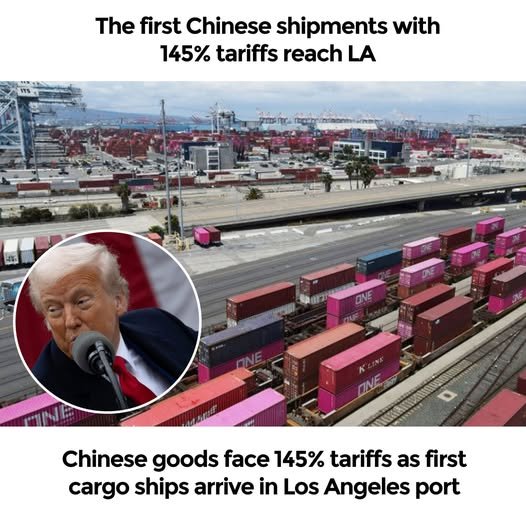Koenigsegg, the Swedish hypercar manufacturer renowned for pushing automotive boundaries, has sparked intense debate with claims from CEO Christian von Koenigsegg that its latest internal combustion engine (ICE), powering the 2025 Jesko Absolut, will outperform all electric vehicles (EVs) in the performance segment. Showcased in late 2024, the Jesko’s 5.0-liter twin-turbo V8, paired with a revolutionary nine-speed Light Speed Transmission (LST), delivers a staggering 2,300 horsepower and 2,750 Nm of torque on E85 biofuel, positioning it as a direct challenge to EV hypercars like the Tesla Roadster and Rimac C_Two. Social media posts on X, including claims like “Koenigsegg’s new engine will WIPE THE FLOOR with EVs,” have amplified the hype, but the engine’s niche appeal, high cost, and environmental concerns raise questions about its broader impact. This article explores the Jesko’s V8, its performance claims, and whether it can truly overshadow EVs in 2025.
The Jesko V8: A Masterpiece of Engineering
The Koenigsegg Jesko Absolut, an evolution of the Jesko introduced in 2019, is powered by a 5.0-liter twin-turbo V8 engine that represents the pinnacle of ICE technology. Producing 1,600 horsepower on standard gasoline and up to 2,300 horsepower on E85 biofuel, the engine achieves a power-to-weight ratio of 1.7 hp/kg, surpassing most EVs. Its lightweight crankshaft, flat-plane design, and ceramic ball-bearing turbochargers enable a redline of 8,500 rpm, delivering instant throttle response and a visceral exhaust note that EV motors cannot replicate.
The engine is paired with Koenigsegg’s nine-speed LST, which shifts gears in milliseconds without interrupting torque, offering seamless acceleration. The Jesko Absolut, optimized for top speed, is projected to exceed 310 mph (500 km/h), potentially breaking the production car speed record. Its aerodynamic body, with a drag coefficient of 0.28, and active suspension systems enhance stability at extreme velocities. The car’s $3.5 million price tag reflects its bespoke engineering, with only 125 units planned, all sold out by early 2025.
Christian von Koenigsegg, in a 2024 interview with Top Gear, claimed the V8 “redefines what’s possible with combustion engines,” asserting its performance “wipes the floor” with EVs in acceleration, top speed, and driving experience. Posts on X highlight the engine’s specs, with one user stating, “2,300 hp and 2750 Nm? Koenigsegg’s Jesko makes EVs look pedestrian!”
Why Combustion? The Case for Hypercar ICEs
Koenigsegg’s V8 leverages several advantages over EVs in the hypercar segment:
- Unmatched Power Density: The V8’s 2,300 horsepower exceeds the 1,914 hp of the Rimac C_Two and the projected 2,000 hp of the Tesla Roadster, offering superior acceleration (0-60 mph in under 2 seconds).
- Lightweight Design: At 1,350 kg, the Jesko Absolut is lighter than most EV hypercars, which carry heavy battery packs (e.g., Rimac’s 2,000 kg), improving agility and handling.
- Biofuel Compatibility: E85 biofuel reduces CO2 emissions by up to 80% compared to gasoline, addressing environmental concerns while maintaining ICE performance.
- Emotional Engagement: The V8’s roar and mechanical feedback provide a sensory experience EVs struggle to match, appealing to enthusiasts who prioritize driving passion.
Koenigsegg’s focus on sustainable fuels aligns with its carbon-neutral goal by 2030, with von Koenigsegg arguing that biofuels and synthetic fuels can make ICEs viable in a net-zero future. The Jesko’s engineering also preserves automotive craftsmanship, a niche that resonates with collectors and purists.
The EV Hypercar Landscape
EVs have redefined performance, with hypercars like the Pininfarina Battista (1,900 hp, 0-60 mph in 1.79 seconds) and Rimac C_Two setting benchmarks. Tesla’s second-generation Roadster, expected in 2025, claims a 0-60 mph time of 1.9 seconds, a top speed over 250 mph, and a 620-mile range, powered by a 200 kWh battery and SpaceX-derived thrusters. EVs offer instant torque, lower maintenance, and zero tailpipe emissions, supported by expanding charging networks (e.g., Tesla’s 50,000 Superchargers).
The mainstream EV market, led by Tesla’s Model Y (1.79 million units sold in 2024), benefits from government incentives, like the U.S.’s $7,500 tax credit, and declining battery costs (down 80% since 2010). Global EV sales hit 14 million in 2024, projected to reach 30 million by 2030, while ICE vehicles face stricter emissions regulations in the EU and China.
Challenges for Koenigsegg’s V8
Despite its performance, the Jesko V8 faces significant obstacles in “wiping the floor” with EVs:
- Niche Market: Priced at $3.5 million, the Jesko targets an ultra-wealthy audience, with only 125 units produced. EVs like the Tesla Model 3 ($39,990) dominate mass markets, where Koenigsegg has no presence.
- Environmental Regulations: The EU’s 2035 ICE ban and China’s NEV mandates favor EVs. Even with biofuels, the V8’s NOx emissions face scrutiny, limiting its global appeal.
- Infrastructure: Biofuel stations are scarce compared to EV chargers. The Jesko’s E85 compatibility requires specialized fuel, unavailable in many regions.
- Battery Advancements: EV batteries are improving, with solid-state designs promising 50% higher energy density by 2030. The Roadster’s range and acceleration rival the Jesko without emissions.
- Cultural Shift: Younger buyers prioritize sustainability, favoring EVs’ zero-emission narrative. Posts on X note, “Koenigsegg’s V8 is insane, but EVs are the future for most.”
Analysts like Sam Fiorani of AutoForecast Solutions argue the Jesko’s impact is limited to the hypercar niche, stating, “Koenigsegg’s V8 is a masterpiece, but EVs dominate scalability and policy support



